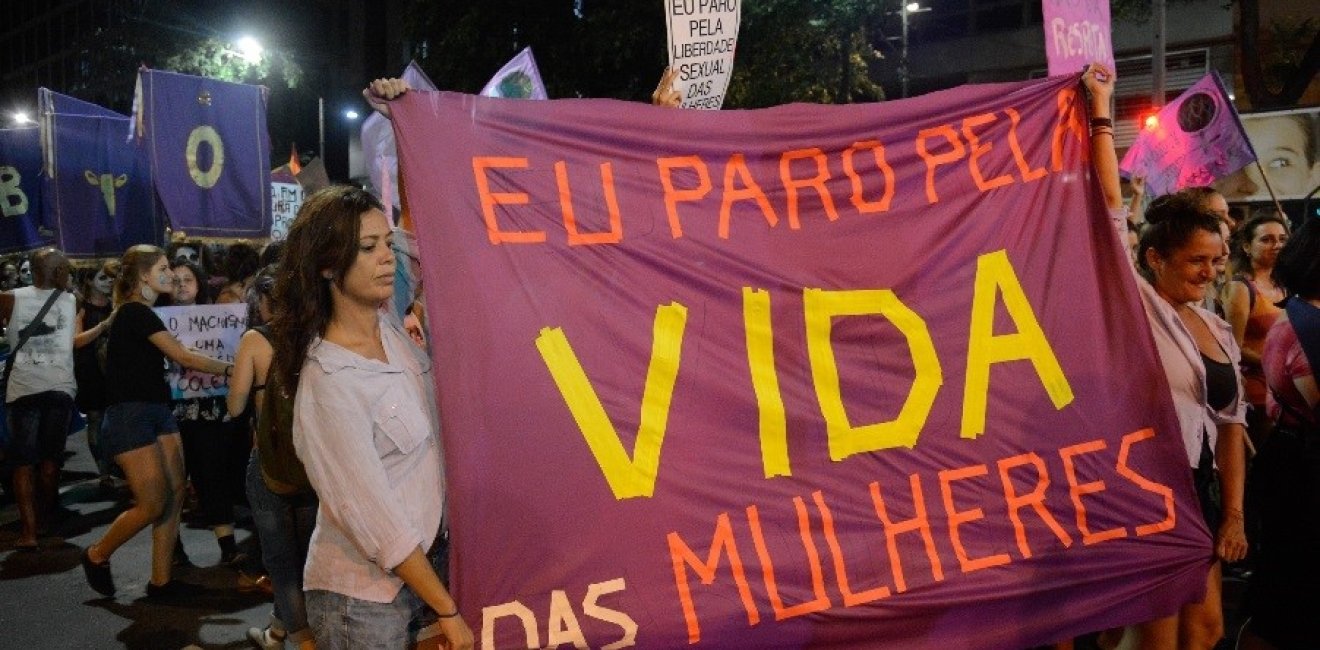
A blog of the Brazil Institute

On March 8—International Women’s Day—Brazilian President Michel Temer marked the occasion by delivering a sincere but problematic speech on the role of women in society. President Temer received staunch criticism for saying, "nobody is more capable [of] pointing out the unbalances in supermarket prices than women,” grounding the contribution of women firmly in their status as wives and mothers. Yet he also pointed out that in Brazil and abroad women are still treated as second-class citizens and promised to fight against feminicide and violence against women, which have a long history in Brazil and have intensified in recent years.
_________________
In 1983, Maria da Penha Maia Fernandes survived two attempted murders at the hands of her then-husband. On the first try, da Penha was asleep when her husband shot her in the back twice, leaving her permanently paralyzed from the waist down. Upon return from the hospital, her husband tried to electrocute her. Da Penha’s case sparked a series of legal battles and social movements in the fight to prevent violence against women.
For almost two decades, the Brazilian courts neglected da Penha’s case while her assailant remained free. Given the public nature of the crime and the state’s inadequate response, da Penha’s case was brought to the Inter-American Commission Court of Human Rights (IACHR). The landmark in 2000 ruling found Brazil—and its judicial authorities—guilty of negligence and unwarranted delay of trial, jeopardizing the safety of the victim and the possibility of punishing the accused.
In response to the IACHR ruling and in honor of the victim, the Brazilian government enacted the “Maria da Penha Law” (also known as Brazil’s Federal Law 11340) with the objective of reducing domestic violence against women. The law expedites court orders and domestic violence cases, as well as imposes harsher sentences for perpetrators. In 2015, women were afforded greater protection when former President Dilma Rousseff adopted the “Lei do Feminicidio,” which distinguished regular homicides from homicides specifically targeting women by adding it to the Brazilian Penal Code and imposed higher penalties for perpetrators, ranging anywhere from twelve to thirty years.
Yet gender violence in Brazil is at a record high, despite widespread activism and significant legislative progress on handling crimes against women. According to a 2015 report by Mapa da Violencia, a nonprofit organization that analyzes violent crime, Brazil has the fifth highest rate of homicides per 100,000 women, behind only El Salvador, Colombia, Guatemala, and Russia. Especially when compared to first world nations, Brazil’s indices are alarming.
The theme of gender violence disproportionately affects women of color, low income women, and younger women. The domesticity of crimes against women is an equally important factor of “feminicide.” More than 50 percent of female homicides in 2013 were committed at the hands of family members and 33.2 percent in 2015 were by partners or ex-partners. Women in Brazil endure hardships beyond physical abuse. Sexual and psychological assault are also pervasive in society, especially since crimes against women are under-reported and the Brazilian legal system allows for leniency on criminal punishment.
The highly patriarchal structure of Brazilian society also contributes to the silencing of victims and perpetuation of gender violence. In a 2016 interview with NPR, women sheltered in a casa abrigo—the Portuguese term for shelter house—opened up about their experiences with domestic violence. They described a Brazilian society in which domestic violence is normalized, in which women are taught to be submissive, and in which “[having] a man, even a bad one” is better than no man at all.
On a larger scale, a recent report by InSight Crime suggests that organized crime is often overlooked as a factor of violence against women in Latin America. With the emphasis usually placed on murder rates and domestic abuse, it is easy to ignore the role of gang violence and human trafficking. Female victims of human trafficking are often “tricked into working in the sex trade where they are tortured, raped, and often murdered.” Due to the profitability and impunity in human trafficking, there is an endless cycle of victimization for women in Latin America. This reality affects women and girls’ opportunity to receive an education and find work. Preventing trafficking and violence against women by promoting special task forces or even appealing to international intervention to build a support system for these victims would go a long way in reducing the number of “feminicides” in Latin America.
The situation in Brazil shows that laws alone are not deterrents for crimes against women. In order for the legal system to protect women in Brazil and worldwide, it is also necessary to change retrogressive views of gender roles, something still perpetuated even at the highest levels of the Brazilian government. When President Temer took office in May 2016, he appointed an all-male Cabinet and eliminated the Ministries of Women, Racial Equality and Human Rights. Recently, President Temer took measures to remedy the situation, including appointing two women to his Cabinet and reinstating the ministries albeit under different names. Yet, Brazil lags behind many countries in terms of gender equality: the governments of Syria, Kuwait, Iran and Somalia all have more women in ministerial posts than Brazil. Brazil ranks 154th in number of women in the Legislative Branch, with only 10 percent of women in Congress and 14 percent in the Senate.
Women’s rights progress in Brazil has been slow, and unless attitudes toward women’s roles change, it doesn’t seem like it will pick up anytime soon.
Image by Agencia Brasil
Author

Explore More in Brazil Builds
Browse Brazil Builds
They're Still Here: Brazil's unfinished reckoning with military impunity


